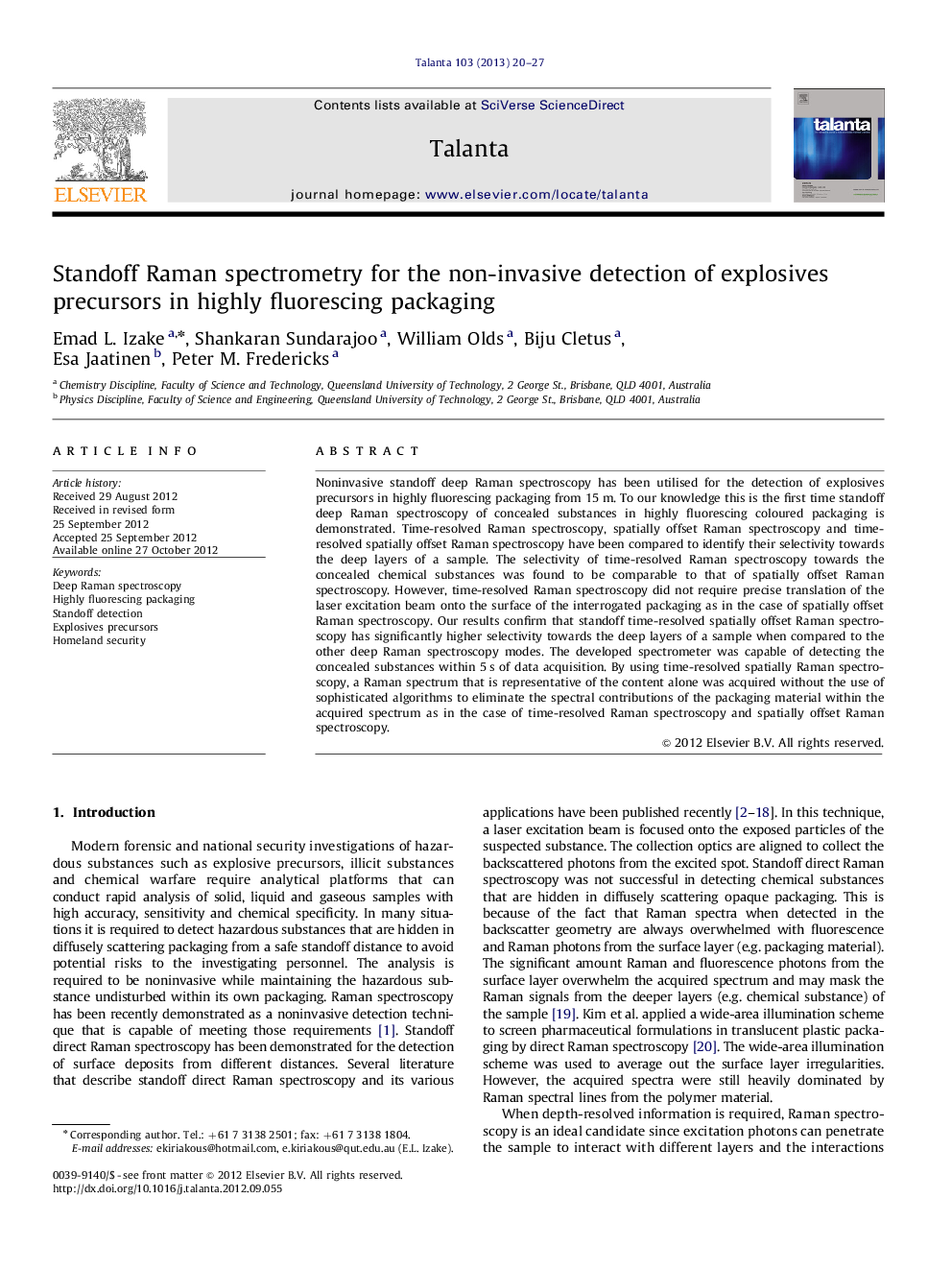| Article ID | Journal | Published Year | Pages | File Type |
|---|---|---|---|---|
| 1242895 | Talanta | 2013 | 8 Pages |
Noninvasive standoff deep Raman spectroscopy has been utilised for the detection of explosives precursors in highly fluorescing packaging from 15 m. To our knowledge this is the first time standoff deep Raman spectroscopy of concealed substances in highly fluorescing coloured packaging is demonstrated. Time-resolved Raman spectroscopy, spatially offset Raman spectroscopy and time-resolved spatially offset Raman spectroscopy have been compared to identify their selectivity towards the deep layers of a sample. The selectivity of time-resolved Raman spectroscopy towards the concealed chemical substances was found to be comparable to that of spatially offset Raman spectroscopy. However, time-resolved Raman spectroscopy did not require precise translation of the laser excitation beam onto the surface of the interrogated packaging as in the case of spatially offset Raman spectroscopy. Our results confirm that standoff time-resolved spatially offset Raman spectroscopy has significantly higher selectivity towards the deep layers of a sample when compared to the other deep Raman spectroscopy modes. The developed spectrometer was capable of detecting the concealed substances within 5 s of data acquisition. By using time-resolved spatially Raman spectroscopy, a Raman spectrum that is representative of the content alone was acquired without the use of sophisticated algorithms to eliminate the spectral contributions of the packaging material within the acquired spectrum as in the case of time-resolved Raman spectroscopy and spatially offset Raman spectroscopy.
► Noninvasive Raman detection of explosives in highly fluorescing packaging is utilised. ► We compare various standpoff deep Raman modes for their selectivity towrds deep layers of a sample. ► Combined space and time-resolved Raman is proven to have high selectivity towards the deep layers. ► The new spectrometer was capable of detecting substances within 5 s of data acquisition. ► There was no need to use sophisticated algorithms to aquire a spectrum of the deep layer alone.
